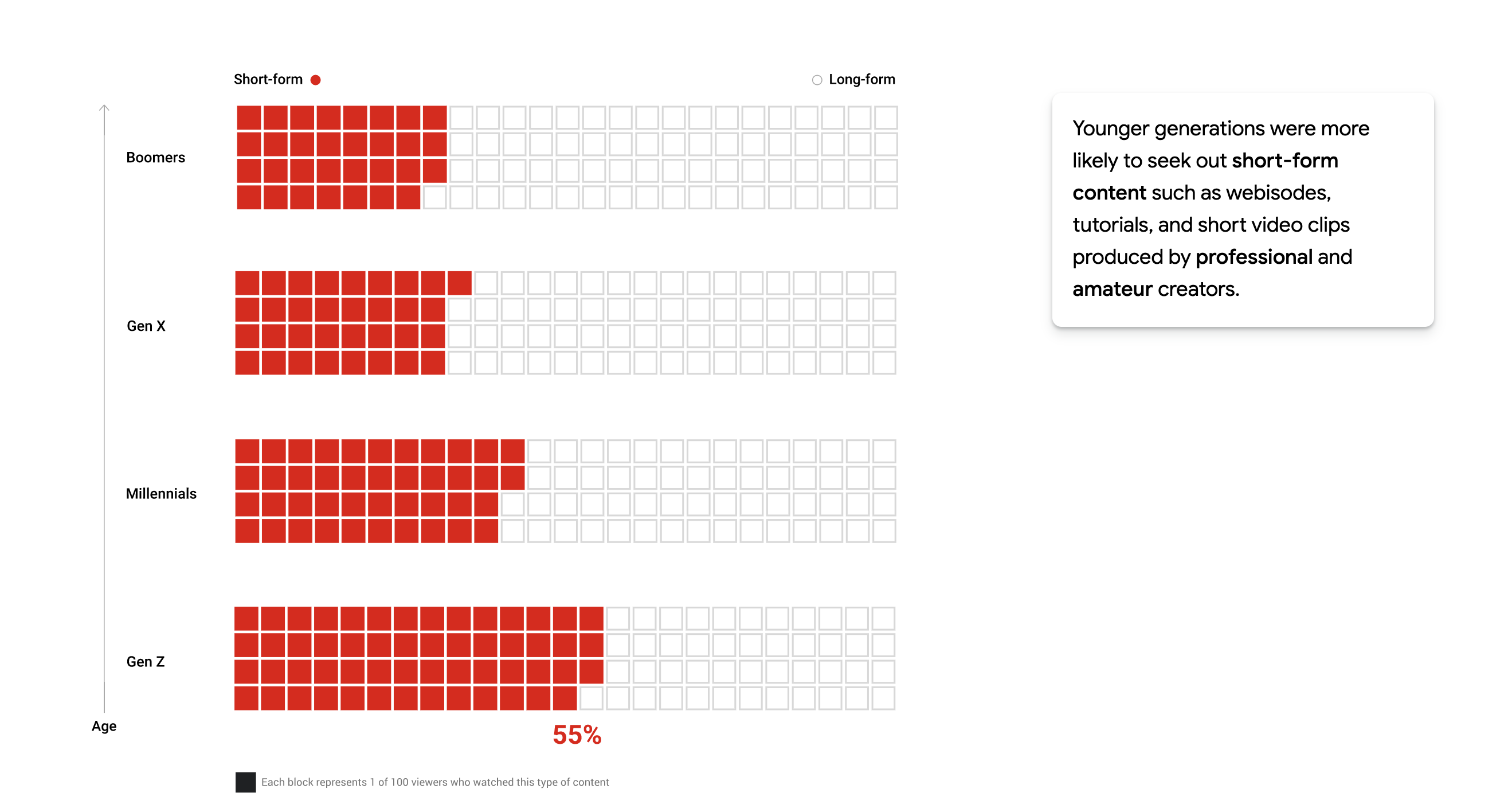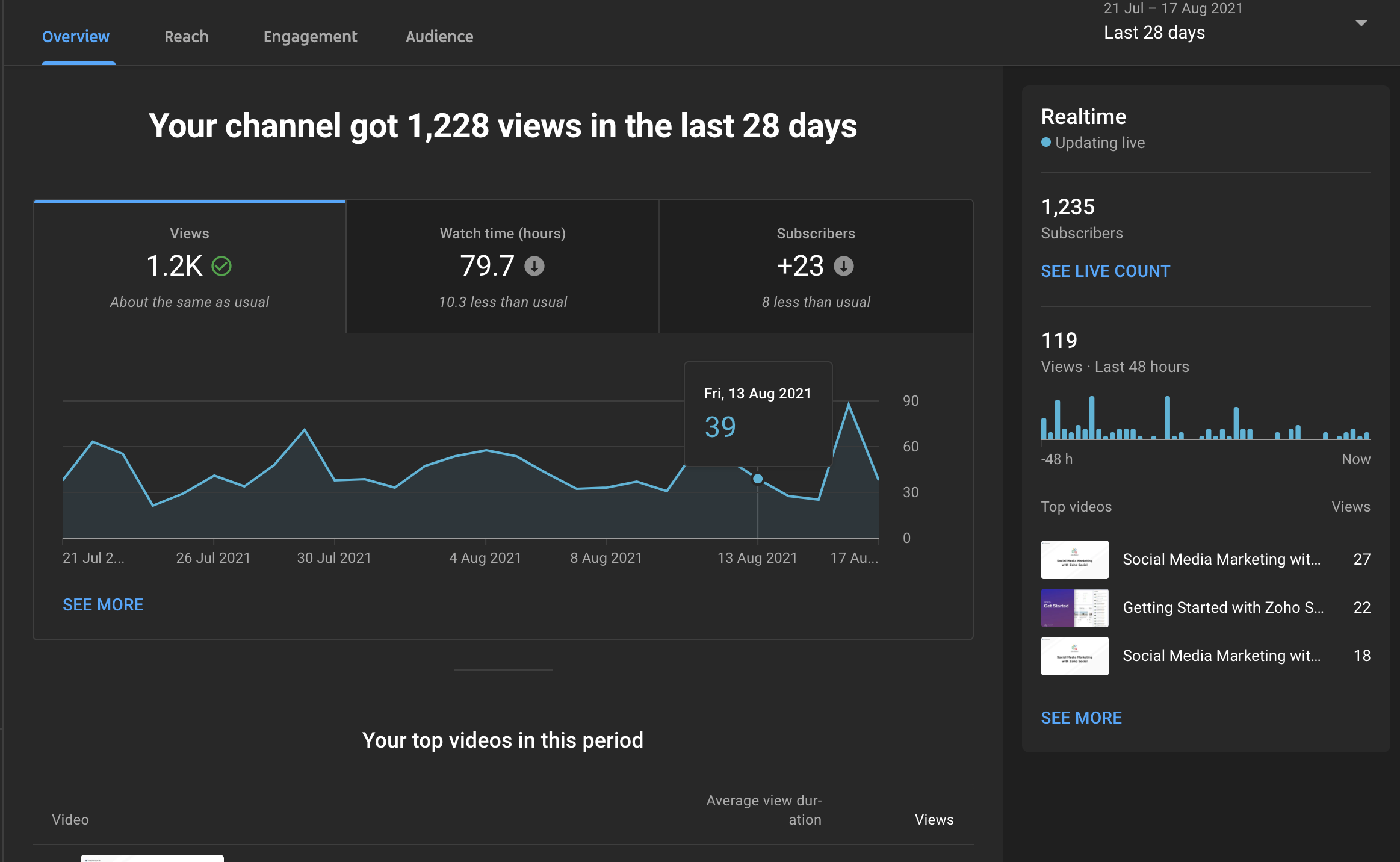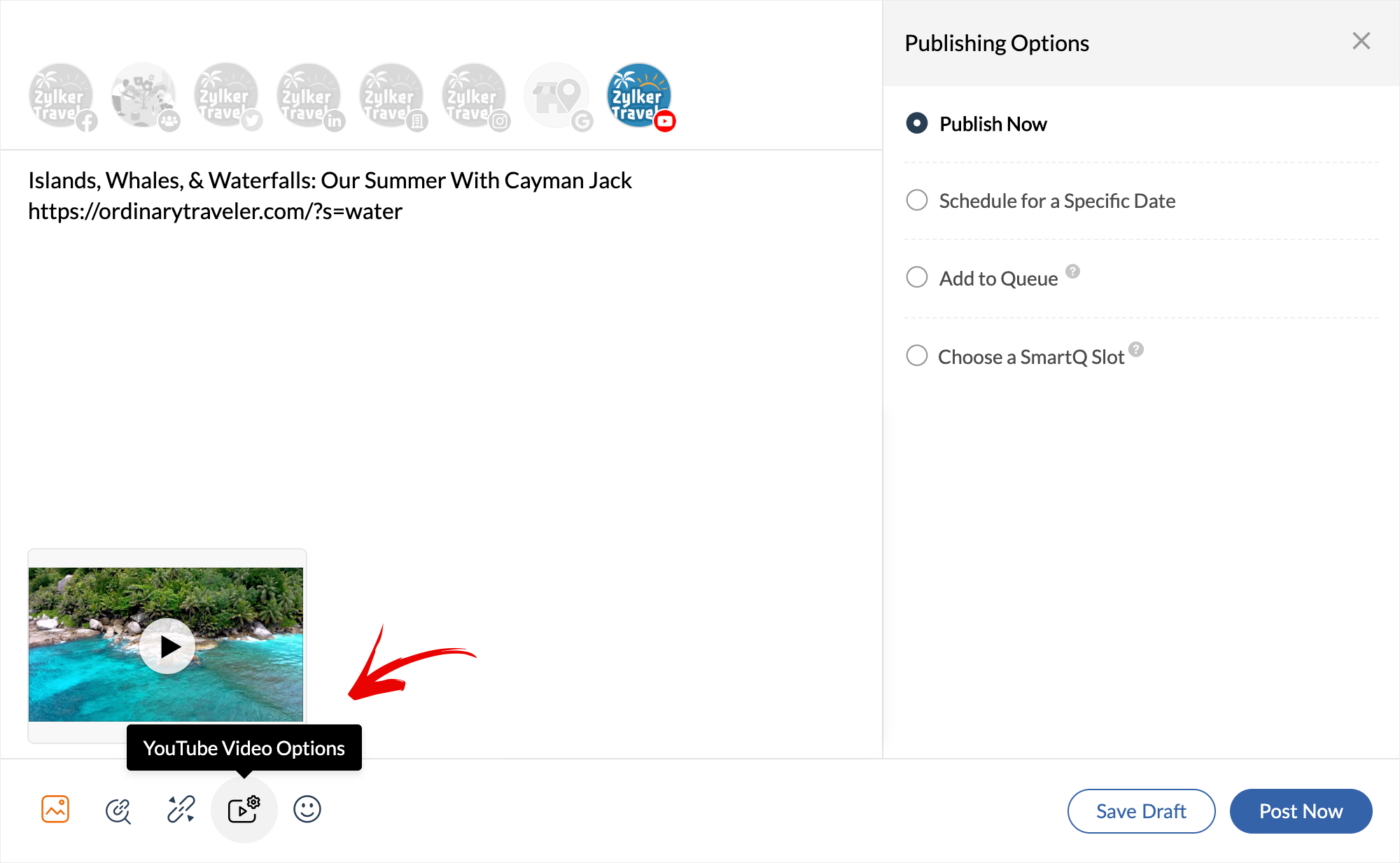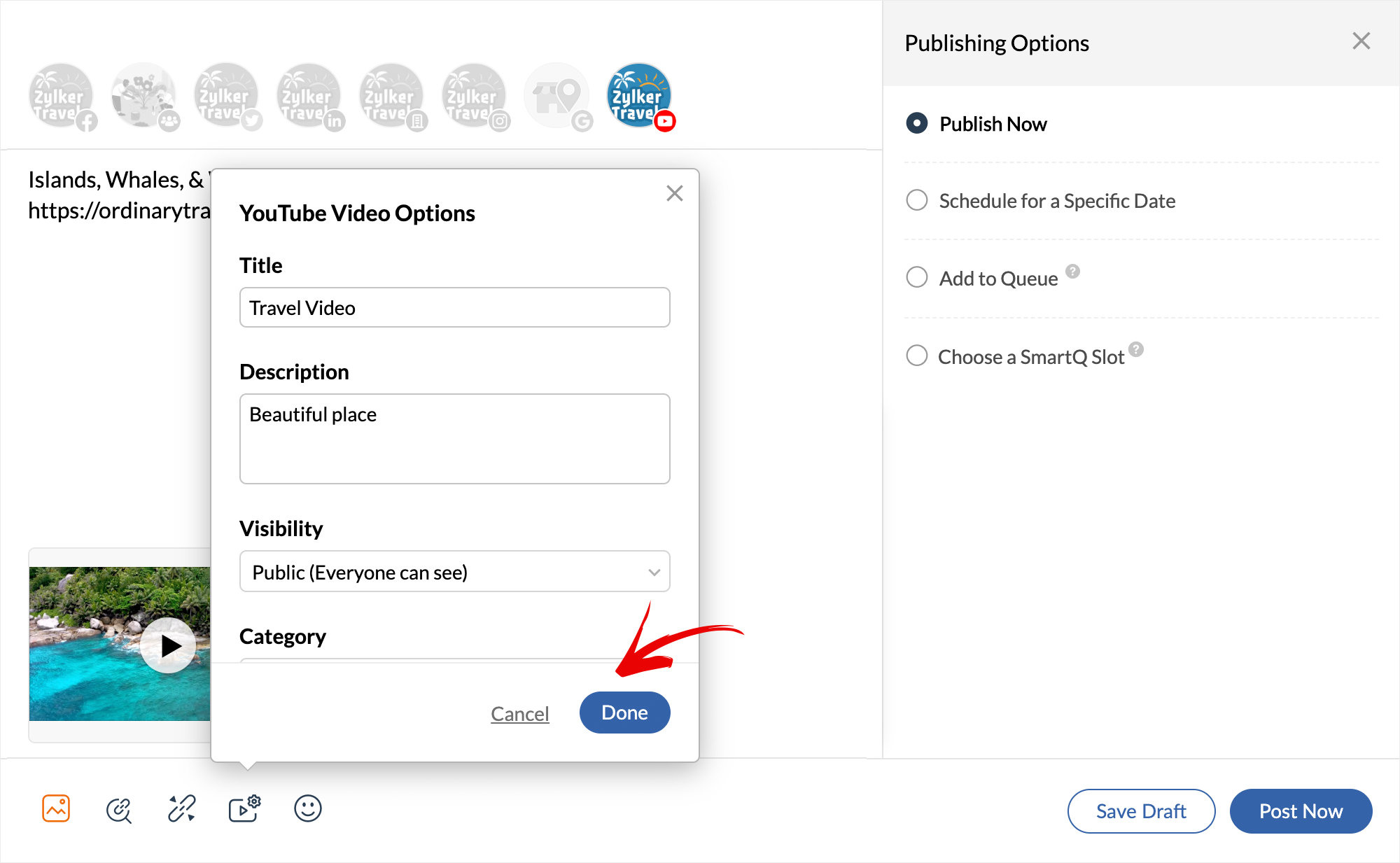A complete guide to YouTube marketing
- Last Updated : August 17, 2023
- 2.9K Views
- 7 Min Read

Since its launch in 2005, video streamer YouTube has become one of the most dominant social media platforms and an indispensable marketing tool for businesses. To take advantage of this evolution, though, your videos must be accompanied by a YouTube marketing plan.
Our previous article served as an introduction to YouTube marketing and how businesses can incorporate YouTube into their marketing strategy at a beginner level. In this article, we'll discuss in detail how to develop a YouTube marketing strategy and how advertising on it impacts your business in a positive way.
Developing a YouTube marketing strategy
Uploading your video on YouTube is free, but it comes with a different kind of cost. Your videos will have promotional content included as ads, which could range from competitor ads to the ads that have no relevance to the content in your video.
Irrespective of all these limitations and hindrances, so many businesses use YouTube because it is still an effective marketing tool for two reasons: it reaches a vast audience and it is very cost-effective. Videos attract and engage more people, increasing the chances of the audience being compelled to take action after seeing video ads. Recent trends from multiple surveys say that videos are responsible for generating the most conversions. YouTube videos are also easy to search for using keywords, both on YouTube itself and through Google.
Writing video scripts for YouTube
Creating an impeccable YouTube marketing strategy is no easy feat. Businesses need to come up with videos and sublime video scripts that have both educational and viral potential and that instantly engage their audience. Before pressing the record button on your camera, you need to make sure you've incorporated the five key steps mentioned below into your video script.
1. Write a brief
While it might seem trivial, a brief or overview of what you intend to do is necessary for the final script. Having a brief also helps everyone in the team be on the same page by getting them to focus on the goals and key takeaways. It doesn't have to be fancy—it can be as simple as answering the below questions:
Why are we making this video and what is the end goal?
Who is our target audience?
What are the key takeaways for our audience?
What is our call to action (CTA)?
Adding to these, it's important to identify potential keywords using YouTube suggestions. Once you narrow down your topic, spend additional time identifying more specific keywords relating to it.
2. Start with a hook
A script is simply writing or typing down all your content, whether that's just dialogue or whether it also includes descriptions of accompanying visuals. One of the main things you have to ask is, "What do I want share with my audience through this video?" This is the hook. You're telling people how they will benefit from watching your video. Before getting into the rest of the content, you have come up with this hook, which involves introducing both yourself and the topic your audience is going to learn about from this video.
For example: If you're going to teach about social media marketing, your introduction can be: "Hi there! I'm (narrator name) from (company name - ex: Zoho Social). In this video, I'm going to explain how your business can benefit from social media marketing."
3. Write conversationally
A good script should be written section by section, making it easier for the person on camera to deliver its message in a natural way. The purpose of this script is purely functional, so you have to write the way you want the person on camera to speak. Keep sentences crisp and short, making it sound like natural conversational. Avoid compound sentences so the audience can easily digest the information they're hearing. Optimize your content pertaining to your target audience — if your target audience is younger, infuse a humorous tone into your script to make it more relatable and sound more conversational.
4. Write every single thing on the script
Some tend to just write pointers or an outline in their script, but this will make it difficult for the person on camera. Writing every single thing on the script helps to be clear and concise regarding what you're trying to deliver to your audience. If your video will transition from a person speaking in front of the camera to an infographic to show a stat or a short animated video of a product demonstration, you have to mention these transitions in the script. It not only gives the person on camera cues to pause and introduce these things to the viewers, but it also tells the editor to insert these transitions and make it look fluid.
5. Rehearse to improve the script-to-screen translation
Now you've got a decent idea about how to write a script, but that's only half the task—the other half is to present it seamlessly in front of the camera. To translate your script to the screen, you have to practice reading the script to understand how to bring it to life on camera and present it to the audience in a way that's easy to comprehend. A table read—or rehearsal—helps you find the right tone, where to pause, where to have cues for video transitions, and how to avoid sounding robotic in front of the camera.
Final tip: Make sure you have a laptop and chair near you to keep your lines handy while shooting—this helps you avoid needing another person for prompting.
How to market your YouTube channel
Now the video script is done, you've shot and edited your video, it's ready to publish, and you've created your brand's YouTube channel. So what's next? There are few steps one needs to follow after creating a YouTube channel:
Step 1: Learn about your audience
Marketing with data is always an essential thing to do because it helps you understand your audience's behavior. This includes qualitative data about audience demographics, like where most of the users live, their age group, and what devices they watch YouTube on. For example, in the U.S., 81% of YouTube users are between ages 15-25, and 70% of their watch time is through mobile. 55% of GenZ users prefer short-form video according to Think with Google.

Another great place to collect whatever qualitative data you can gather is the Analytics tab on YouTube.

Step 2: Complete a competitive analysis
Like any other social media channel, YouTube is a highly competitive space. It's important to identify your competitors' channels and the videos they publish on their channels through a comprehensive competitor analysis. Start by identifying your immediate competitors and the type of keywords they rank associated with your brand, or see what channel or videos appear in searches on YouTube for the same keywords. Conduct a SWOT analysis to understand what's working for your competitor and what isn't and how your brand can capitalize on that.
Step 3: Optimize your videos for more views
YouTube is also a search engine like Google. Video results are ranked by titles, keywords, description, video tags, and other factors. Here are a few important points to keep in mind:
Write a catchy headline for the video
Write a keyword-rich description
Create a standout thumbnail
Add watermarks and video tags
Read about YouTube video SEO in detail, which we have discussed in our earlier article.
Step 4: Learn from your favorite channels
We can always learn from the top-performing YouTube channels that have crazy engagement rates. Take note of the techniques and methods that hold their audience's engagement, even if that channel has nothing to do with your business. Always have a look at the most-trending videos on YouTube to understand the average duration of these videos and why they're trending.
Step 5: Try to partner with an influencer
Like Instagram, getting an influencer on board for your YouTube videos will lead to a wider reach. Ideally, they'll also mention their presence on your channel in their own videos, which will give you access to their audience. Getting an influencer on your channel always works to gain good traction for your channel.
Step 6: Upload and schedule your videos
It's important to schedule and upload your videos for publication, but only do so after optimizing them as per YouTube's SEO technique, where you include video tags, keyword-rich descriptions, etc.. After analyzing audience behavior and the best posting time for higher audience engagement, you can schedule and upload your videos through a social media tool. For example, our own Zoho Social contains a YouTube integration feature that makes scheduling and posting videos easy.
Step 7: YouTube advertising
If your team has a marketing budget to spend, YouTube advertising can be effective to the audience beyond your channel. It's a good way to target a certain group you think might be interested in your content. YouTube ads gain more attention because of its massive audience. There are four different categories of YouTube ads: skippable in-stream ads, non-skippable in-stream ads, video discovery ads, and non-video ads.
Posting a video on YouTube through Zoho Social
Let's quickly look at how to post a video on your YouTube channel using Zoho Social. It can be done in three easy steps:
Click on the New Post button on your dashboard and tap on Attach Multiple Photosor aVideo option.
Once you upload the desired video, click on the tiny video icon on the bottom of your Publishing Window called YouTube Video Options. From here you can add video details like the title, description, visibility, category, and tags.

Title: A name that best describes your YouTube video.
Description: Metadata that describes the video to your audience. The content that you add on the Publishing Window will be used as the Video Description at the time of publishing.
Visibility: Set the visibility of your video as either public/private or unlisted.
Category: Choose the category your video fits the best from the list of auto-generated options. Example: Science, Travel, Sports, etc.
Tags: Add appropriate hashtags, separated by a comma, to gain more traction for your video content.

Now, hit the Done button.
You can choose to post your video instantly or schedule it according to your convenience from the list of all available publishing options.
With Zoho Social, you can easily upload, schedule, and monitor your YouTube marketing efforts across different social platforms from a single dashboard.
 Ashwin
AshwinMarketer by day and writer/poet by night! I get the dopamine rush when my thoughts are put down as words or poems. A person with big time OCD (Obsessive Cinema Disorder).



Comments(2)
Very quality information
Nice article. Thanks for the quality information.